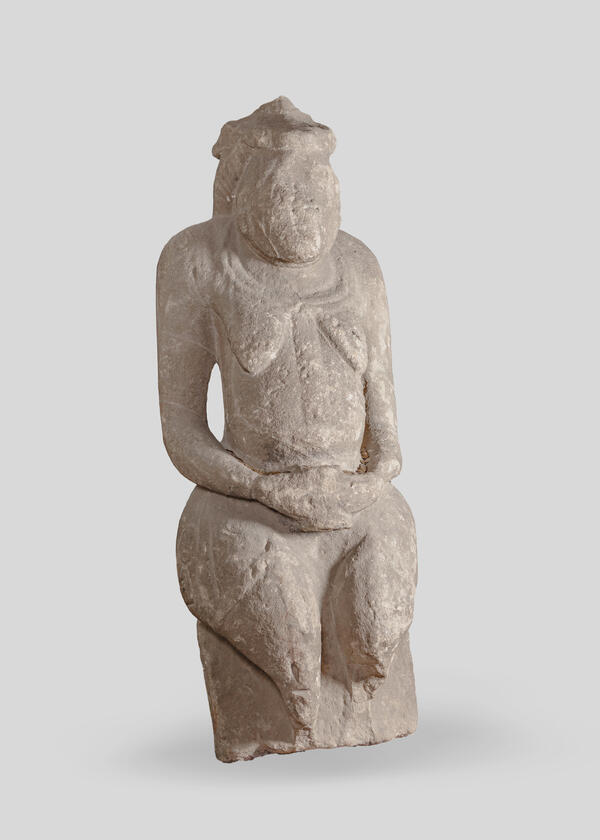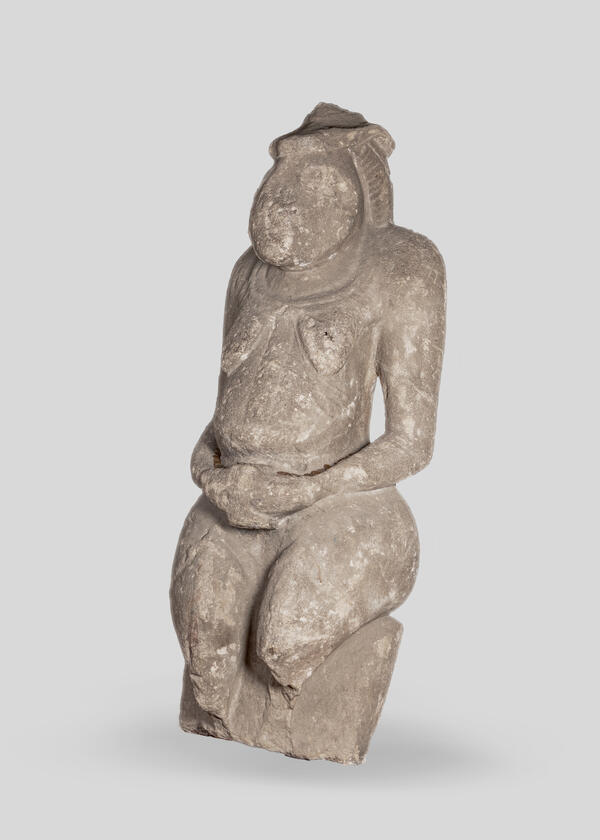The Polovtsian stone baba is one of the two statues that Dmitry Gennadyevich Burylin presumably acquired in 1913–1916 along with materials from the expedition to the Northern Black Sea coast and items from Panticapaeum.
The archaeological collection of Dmitry Burylin includes two Polovtsian stone babas — “male” and “female”. The exhibition presents a full-size seated sculpture defined as that of a man by the Ivanovo archaeologist Alexander Viktorovich Povelikhin. The statue has been preserved partially: the face and the upper part of the helmet tulle are cut off, the chin and the vessel are chipped, and some parts are missing from the right shoulder. The sculpture itself is severely weathered, making it impossible to study the iconography in detail. The head is completely separated from the monolith, and the neck is short. A sphere-conical helmet can be discerned on the head. Three braids descend from under the helmet to the back, converging into one braid at the shoulder level; there are also side braids that descend from behind the ears. The face is wide and oval. The wide shoulders are sloped and rounded. The chest shows traces of supporting belt straps, connected by a cross strap and going under the armpits; buckles are fixed at the intersection of the straps. The stomach is wide yet small and has a semioval shape with the lower part protruding forward. The arms are not very big, the shoulders seem broad in profile and are separated from the stomach by wide deep grooves. The sculpture holds a vessel of an unidentified shape due to the damage it sustained. The big and wide legs are bent at the knees. There are greaves on the thighs. The feet rest on a rectangular footstool. At the level of shoulder blades, there are supporting belts with a round buckle at their intersection. The sculpture is separated from the pedestal by a groove, indicating the line of buttocks. The sides and back of the statue are hewn and leveled. The pedestal has a somewhat trapezoid shape.
At the end of the 12th century, there was a noticeable change in the composition of statues — they became simpler. In the 13th century, the Polovtsians were conquered by the Mongols. A considerable part of Polovtsian monuments perished at the hands of Muslims, who fought against paganism. Nevertheless, the Polovtsian culture was not completely eradicated and would further adapt to Orthodoxy. During the following centuries, some Slavic settlements had a tradition of honoring the Polovtsian idols, which were believed to possess the power to influence the revival of nature, the fertility of the land, and the success of the community. In total, more than 2,000 stone babas have survived to this day.



